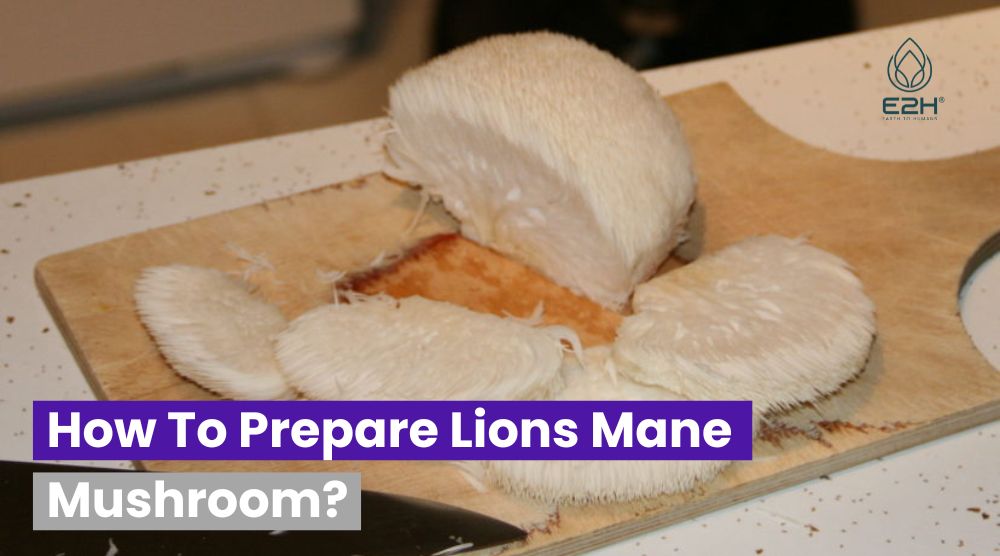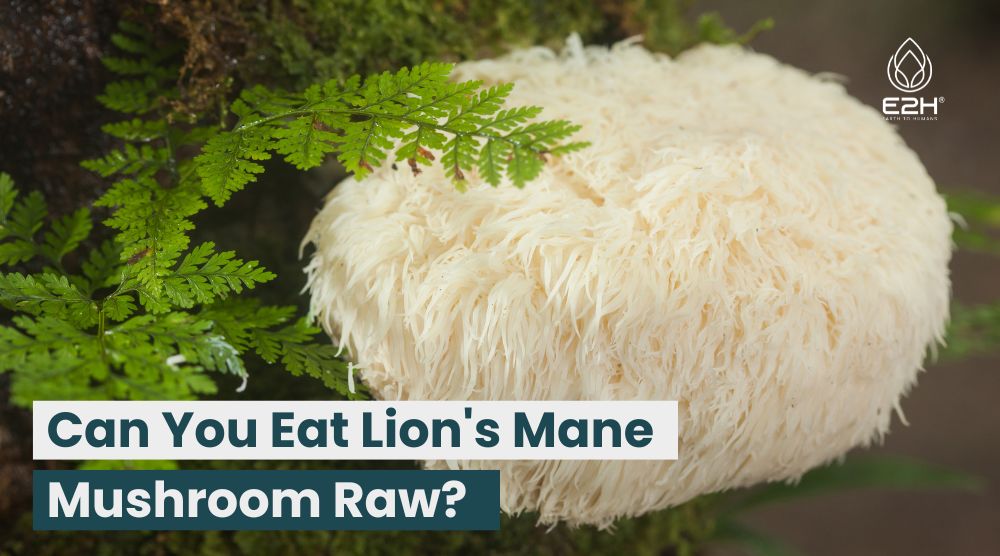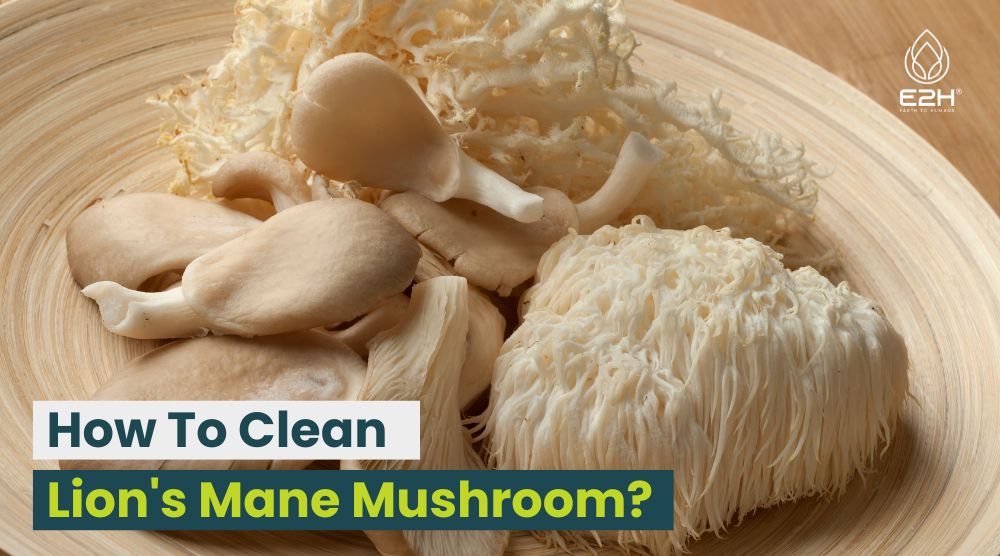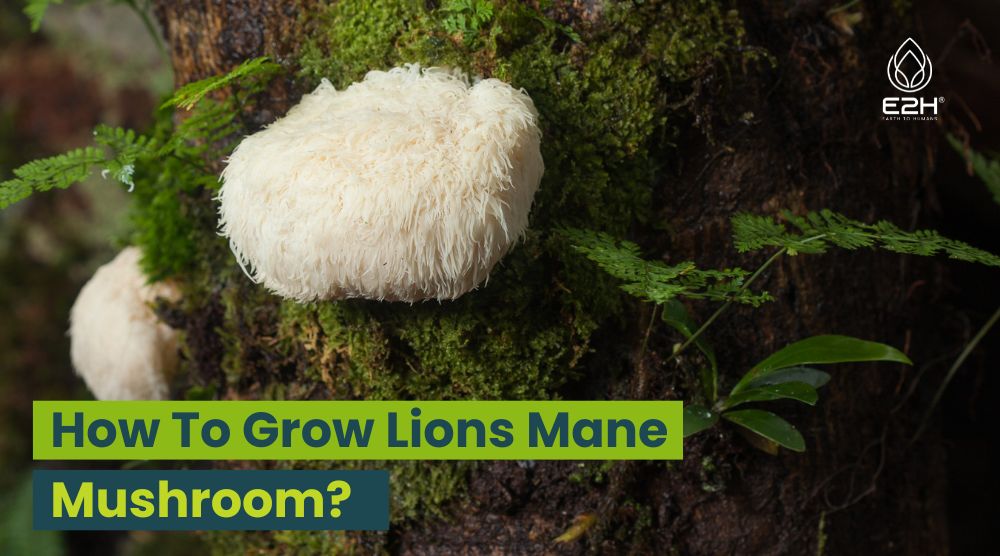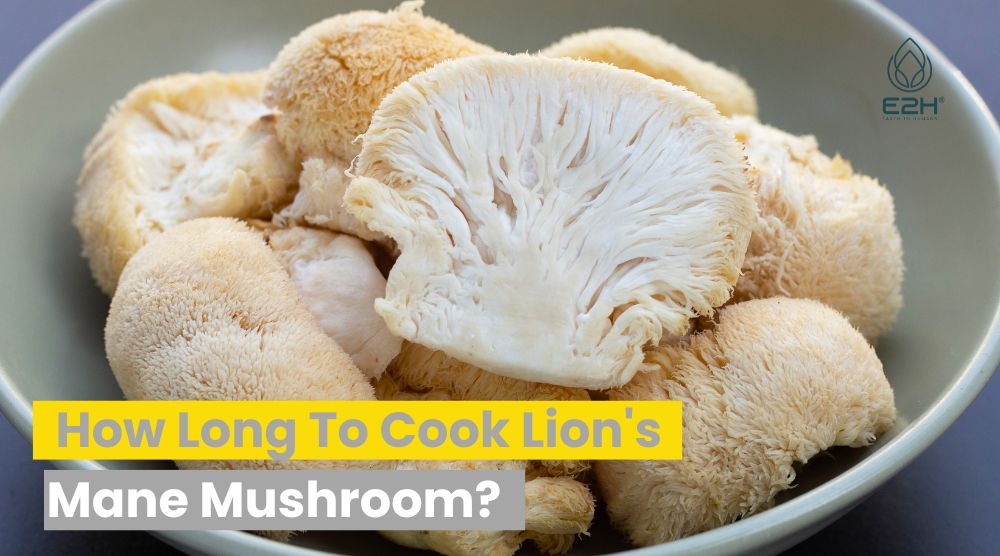How to grow lion’s mane mushrooms outdoors: To grow lion’s mane mushrooms outdoors, you’ll need to create a suitable growing environment by providing a shaded area with ample moisture and a substrate like hardwood logs or sawdust.
What are Lion’s Mane mushrooms?
Lion’s Mane mushrooms are distinctive fungi with a shaggy white appearance resembling a lion’s mane, hence their name. They are highly valued for their culinary uses and are known to have potential medicinal properties. Lion’s Mane mushrooms have a delicate flavor reminiscent of seafood, making them a favorite among chefs and mushroom enthusiasts alike.
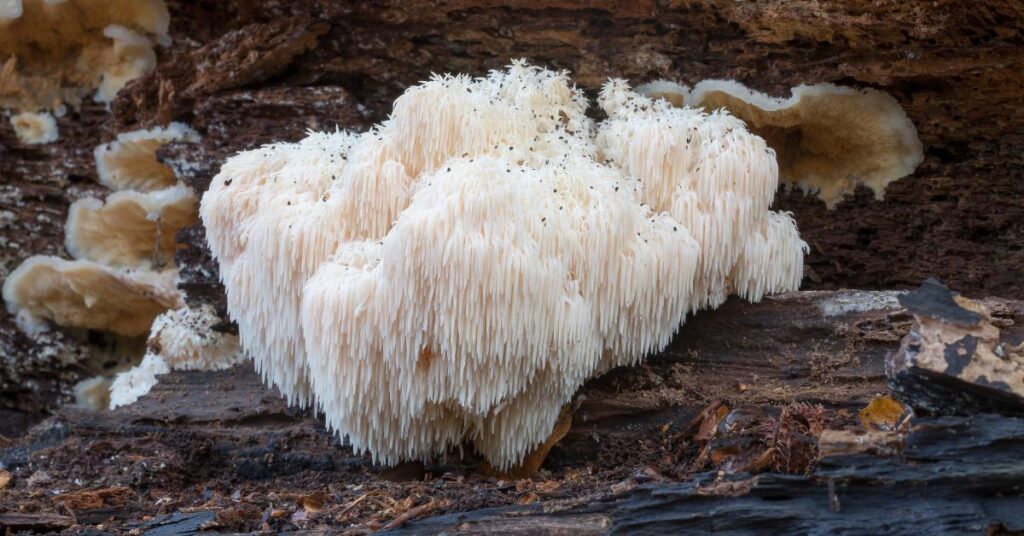
Benefits of growing Lion’s Mane mushrooms outdoors
Growing Lion’s Mane mushrooms outdoors offers several health benefits too. Firstly, natural sunlight provides essential energy for the mushrooms’ growth and development. Outdoor cultivation also allows for better air circulation, which helps prevent the buildup of excess moisture and reduces the risk of contamination. Additionally, growing Lion’s Mane mushrooms outdoors enhances their flavor profile, as they can absorb natural compounds from their environment.
Selecting the right location for growing Lion’s Mane mushrooms
To ensure successful cultivation, it is crucial to choose the right location for growing Lion’s Mane mushrooms outdoors. Consider the following factors:
Sunlight requirements
Lion’s Mane mushrooms thrive in partially shaded areas. Direct sunlight should be avoided, as it can cause the mushrooms to dry out or overheat.
Temperature and humidity considerations
Lion’s Mane mushrooms prefer cooler temperatures ranging from 55°F to 75°F (13°C to 24°C). They also require high humidity levels, ideally around 85%. Consider the climate of your region and choose a location that meets these requirements.
Proper air circulation
Good air circulation helps prevent the growth of mold and ensures the mushrooms receive fresh air exchange sufficient oxygen. Avoid growing mushrooms in areas with stagnant air or excessive moisture buildup.
Choosing the right growing medium
The choice of a suitable growing medium is essential for successful Lion’s Mane mushroom cultivation. The two most common options are:
Preparing logs for cultivation
Lion’s Mane mushrooms naturally grow on hardwood trees and logs. Select the hardwood logs, from deciduous trees such as oak, maple, or beech. Cut the logs to a manageable size and age them for a few weeks before inoculating.
Alternative substrates for growing Lion’s Mane mushrooms
If logs are not readily available, Lion’s Mane mushrooms can also be cultivated on alternative substrates. These include sawdust, straw, hardwood pellets, or a combination of hardwood pellets, wood chips, and wheat bran.
Inoculating the growing medium
Once you have prepared the mushroom growing medium, it’s time to introduce the Lion’s Mane mushroom mycelium. The lion’s mane mycelium acts as the “seed” for mushroom growth. There are two common methods of inoculation:
Using spawn or mycelium
Spawn, or mycelium-infused mushroom substrate, can be purchased from specialized suppliers. Alternatively, you can cultivate your own mycelium using a mushroom culture. Carefully distribute the spawn or mycelium throughout the growing medium.
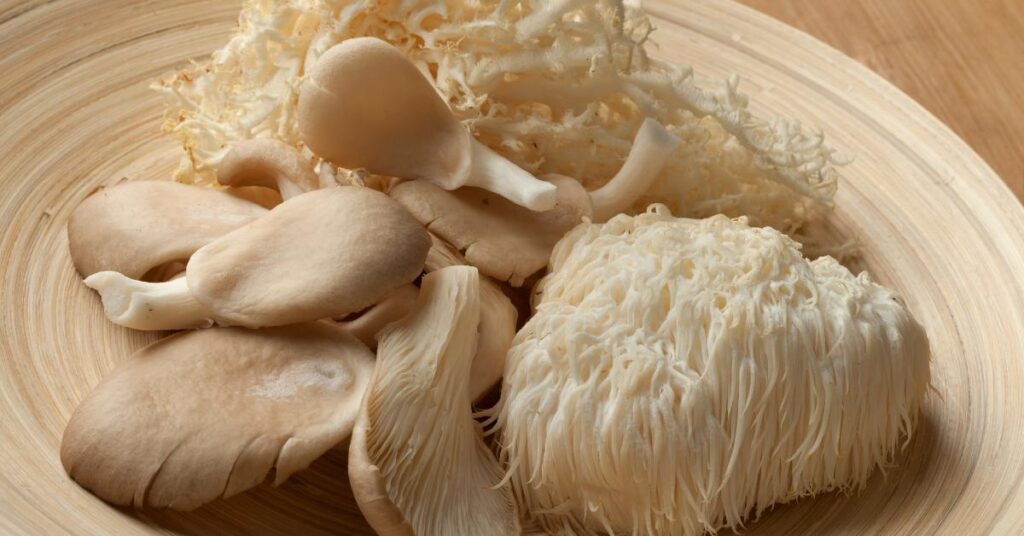
Proper inoculation techniques
Maintaining proper hygiene during the inoculation process is crucial. Sterilize all equipment and work in a clean environment to minimize the risk of contamination. Follow the specific instructions provided with your spawn or mycelium for the best results.
Maintaining optimal growing conditions
To ensure the healthy growth of Lion’s Mane mushrooms, it is important to maintain optimal growing conditions throughout the cultivation process. Consider the following factors:
Watering and moisture control
Lion’s Mane mushrooms require consistent moisture levels. Use a spray bottle to mist the growing medium regularly. Avoid overwatering, as it can lead to waterlogged conditions and promote mold growth.
Protecting the mushrooms from pests and diseases
Monitor the mushroom growing and environment for pests and diseases that can harm the mushrooms. Slugs, snails, and certain insects may be attracted to the growing medium. Take appropriate measures to protect the mushrooms from infestations.
Harvesting Lion’s Mane mushrooms
Once the Lion’s Mane mushrooms have reached maturity, it’s time to harvest them. Look for the mushrooms mature following signs to determine their readiness:
- The mushrooms’ size is optimal, typically between 3 to 6 inches in diameter.
- The mushroom’s appearance is dense and fully formed.
- The edges of the mushroom begin to turn slightly upward.
To harvest the mushrooms, gently twist or cut them at the base. Avoid damaging the mycelium during the process.
Storing and preserving Lion’s Mane mushrooms
To extend the shelf life of harvested Lion’s Mane mushrooms, proper storage and preservation techniques are essential. Consider the following methods:
Refrigeration and freezing methods
Lion’s Mane mushrooms can be stored in the refrigerator for up two to three weeks or one week. To freeze them, slice the mushrooms and blanch them briefly before placing them in airtight containers or freezer bags.
Drying techniques
Drying Lion’s Mane mushrooms allows for long-term storage and versatile culinary uses. Slice the mushrooms into thin pieces and dry them using a food dehydrator or by air-drying in a well-ventilated area.
Cooking and enjoying Lion’s Mane mushrooms
Lion’s Mane mushrooms offer a range of culinary possibilities. Their delicate flavor and unique texture make them delicious mushrooms suitable for various dishes. Here are a few delicious recipes and culinary uses for Lion’s Mane mushrooms:
- Lion’s Mane mushroom stir-fry with vegetables and soy sauce.
- Grilled Lion’s Mane mushroom steaks with herbs and balsamic glaze.
- Lion’s Mane mushroom “scallops” sautéed in butter and garlic.
- Creamy Lion’s Mane mushroom soup with thyme and Parmesan.
- Lion’s Mane mushroom tacos with avocado and lime crema.
Experiment with different recipes and let your creativity shine.
Where is the best place to grow lions mane mushrooms?
The best place to grow Lion’s Mane mushrooms is typically in a controlled indoor environment, such as a mushroom grow kit or a greenhouse. These mushrooms prefer cooler temperatures, around 55-65°F (13-18°C), with high humidity levels (around 85-95%). They can also be grown outdoors in shaded areas, but the conditions need to be carefully monitored.
How long does it take to grow lion’s mane mushrooms?
Lion’s Mane mushrooms take approximately 4-6 weeks to grow from start to harvest. This timeframe can vary from up to six years, depending on the specific growing conditions, such as temperature, humidity, and the quality of the spawn used. It’s important to consistently provide the necessary conditions and regular maintenance during this period for optimal growth.
What are the conditions for lion’s mane mushrooms to grow?
To grow Lion’s Mane mushrooms successfully, specific conditions must be met.
- Firstly, a suitable substrate is needed, such as hardwood sawdust, straw, or supplemented sawdust blocks. The substrate should be sterilized to prevent contamination.
- Secondly, a controlled environment with proper temperature, humidity, and air circulation is crucial. Adequate moisture levels should be maintained by misting the growing area regularly.
- Finally, providing indirect or diffused light is recommended, as excessive direct sunlight can be detrimental.
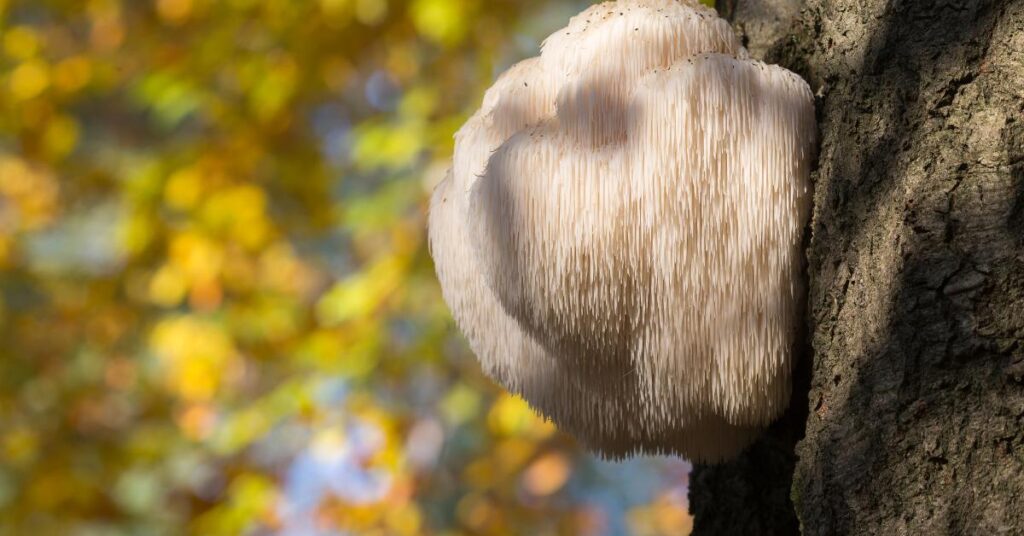
Is Lion’s Mane mushroom easy to grow?
Lion’s Mane mushrooms can be both rewarding and challenging to grow. While they have specific requirements, with proper attention to detail and adherence to the necessary conditions, they can be successfully cultivated. Patience and consistent monitoring are key factors in achieving a successful harvest.
Lion’s Mane cultivation in the Forest Garden
FAQs
Are Lion’s Mane mushrooms difficult to grow?
While Lion’s Mane mushrooms require specific growing conditions, they can be successfully cultivated with proper care and attention.
Can I grow Lion’s Mane mushrooms indoors?
Yes, Lion’s Mane mushrooms can also be grown indoors using a controlled environment and appropriate mushroom growing bags and containers.
How long does it take for Lion’s Mane mushrooms to grow?
The growth cycle of Lion’s Mane mushrooms typically ranges from 3 to 5 months, depending on various factors such as temperature and humidity.
Are fresh Lion’s mane Mane mushrooms safe to eat?
Yes, Lion’s Mane mushrooms are safe to eat and are considered a gourmet delicacy. However, always ensure you are confident in your identification of the lion’s mane mushrooms grow in before consuming them.
Can I use Lion’s Mane mushrooms for medicinal purposes?
Lion’s Mane mushrooms have been studied for their potential health benefits, including cognitive support and immune system modulation. Consult with a healthcare professional before using them for medicinal purposes.
Conclusion
Growing Lion’s Mane mushrooms outdoors can be a rewarding and enjoyable experience. By providing the right growing conditions, selecting suitable substrates, and following proper cultivation techniques, you can successfully cultivate these unique mushrooms in your own garden. Remember to maintain optimal moisture levels to grow mushrooms, protect them from pests, and enjoy the fruits of your labor in the kitchen.


